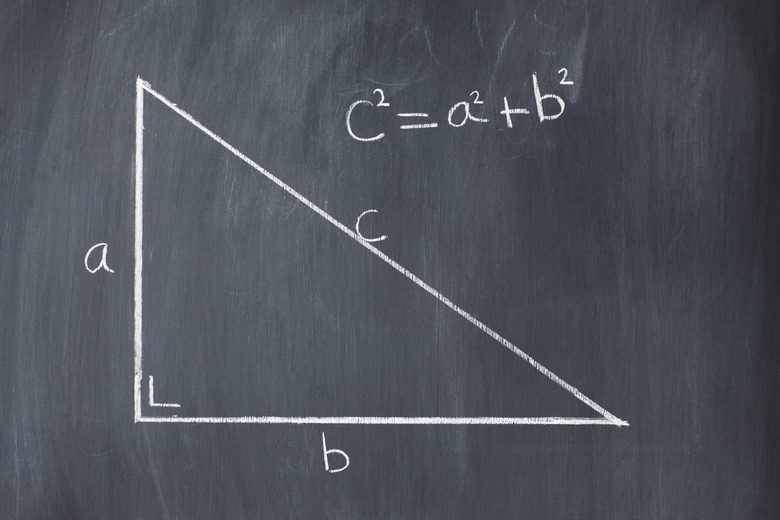The Different Kinds Of Shapes In Math
Teachers begin teaching about shapes at an early age, so students can develop an almost intuitive feeling for recognizing the different shapes at higher grade levels. This excitement usually begins with first-grade geometry when the students draw and label 2-D shapes. Some 2-D shapes include rectangles, squares, trapezoids, triangles and circles. Students also get to know 3-D shapes such as cubes, prisms, cones and cylinders. In higher grades, students will calculate the volume and area of shapes.
Regular Polygons
Regular Polygons
Regular polygons have three or more sides of equal length. You can't make it into the regular polygon club if you don't meet that requirement. Common examples of these straight-sided wonders include triangles, which have three sides; squares, which have four sides; and pentagons, which have five sides. Really, you can have as many sides as you want in a regular polygon, as long as all the sides are of equal length, and all the angles have the same measurement. Students also learn about the special words that refer to regular polygons that have more than four sides, such as a pentagon. Other shapes include hexagon, heptagon, octagon, nonagon and decagon — shapes that have six, seven, eight, nine and 10 sides, respectively.
Irregular Polygons
Irregular Polygons
Polygons that don't have equal sides and angles are called irregular polygons. They often look a bit odd and can be difficult to use when you are trying to figure out their area. One example of an irregular polygon is a rectangle. Unlike a regular polygon – like a square that has four sides of equal length — a rectangle has two sets of sides that are of equal length, instead of one set of four sides of equal length. The four angles of a rectangle all have the same measurements, but its four sides are not of equal length.
Curved Shapes
Curved Shapes
Circles fall into the category of curved shapes; curved shapes are not polygons. An ellipse — which looks a bit like a squashed circle — is similar to a circle and it also is not a polygon. In a circle, the distance from the circle's center to any point on the outside of the circle is the same — no matter where you are on the outside of the circle. In an ellipse, there are two points along the center of the ellipse that are called foci, which means the focal point. The distance between the two foci to the outside of the ellipse always remains the same — no matter where you move the foci.
3-D Shapes
3-D Shapes
Cylinders, cones, cubes, pyramids and prisms are some of the more common 3-D shapes. Meanwhile, mathematicians often come up with unique combinations to describe objects in nature. For example, Earth's shape is an oblate spheroid. The term "oblate' refers to the shape's oblong appearance and the word "spheroid" refers to the fact that this shape looks like a not-quite perfect sphere. In other words, the Earth has a sphere-like shape.
Cite This Article
MLA
Martin, Avery. "The Different Kinds Of Shapes In Math" sciencing.com, https://www.sciencing.com/different-kinds-shapes-math-8361418/. 24 April 2017.
APA
Martin, Avery. (2017, April 24). The Different Kinds Of Shapes In Math. sciencing.com. Retrieved from https://www.sciencing.com/different-kinds-shapes-math-8361418/
Chicago
Martin, Avery. The Different Kinds Of Shapes In Math last modified August 30, 2022. https://www.sciencing.com/different-kinds-shapes-math-8361418/
